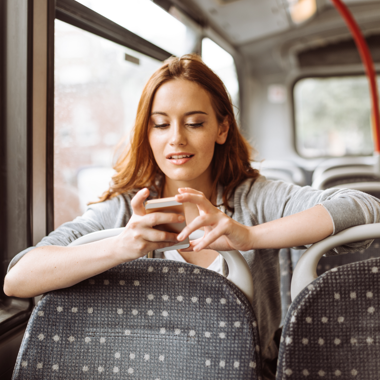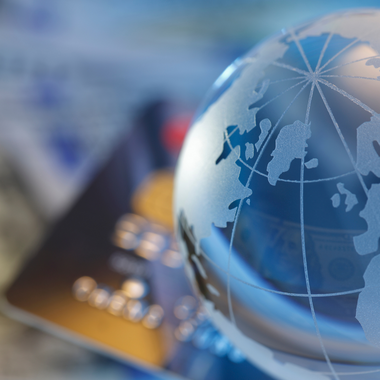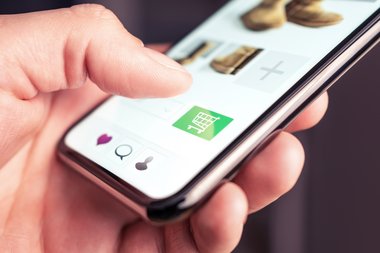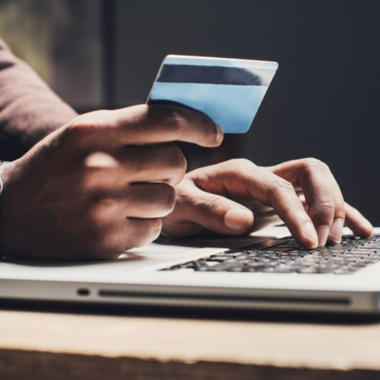
- Four minutes read
How brands can evolve through the checkout post-COVID-19
Businesses will need to seriously consider how they re-invent their customer experience in line with changing consumer expectations as we emerge on the other side of the pandemic.
The COVID-19 pandemic has clearly had a significant impact on consumers’ expectations and the way they interact with brands. This shift began with the physical restrictions that were imposed on movement and commerce to prevent the spread of the virus, and evolved further as consumer attitudes changed during the pandemic.
For businesses, understanding how and why consumers are developing new habits, and more specifically a preference for a more seamless experience and the merging of physical and digital interactions, will be critical as we emerge on the other side of the pandemic. Throughout lockdown people have become accustomed to blending their professional, personal, and commercial connections via both face-to-face and technology-driven remote connections; businesses must adapt to this change and show customers how they are doing this.
We’re already seeing brands work hard to convey that they understand new consumer needs following the outbreak, through advertising but also by demonstrating their commitment to these new customer values. Some of the steps taken by retailers to deliver an improved, socially distant consumer experience in-store have been mandated by governments, but equally many have not. Instead it is the retailers themselves that are taking the lead in this area, demonstrating that their brand is in-step with new customer expectations in the process.
Much of this new “expected experience” is aimed at reducing the number of physical interactions between customers and staff, or other customers. Reducing store capacities, better signage to reduce customer queries, and streamlining communications are some examples of this. But nowhere is this more evident than the checkout.
Payment changes in-store – from seamless to omnichannel
The first of these changes in many countries was an increase in the maximum value limit of a contactless card payment. For example, in the UK this was raised from £30 to £45, and was coupled with advice that consumers should reduce their number of cash transactions. Some retailers went even further, banning cash transactions altogether.
More recently, we have seen vendors in industries such as hospitality and food service integrate digital payments into their customer experience. Customers can now order and pay on an app instead of through a human interaction, eliminating a contact and possible transmission of the virus.
These two checkout evolutions demonstrate some of the key strategies businesses must consider now to reposition their brand identity through the checkout. Namely, these are a reduction in friction in all processes when the consumer interacts with a business’ employees, and providing a unified brand experience and customer journey across all platforms.
Evolving the online checkout
And it isn’t only retail businesses that need to think about how consumers want to engage with their brand in the aftermath of COVID-19. These new imperatives matter as much to online businesses as high street retailers, not least because many consumers are new to spending money online. When we recently asked consumers for our Lost in Transaction: The impact of COVID-19 on consumer payments trends report, 18% of the 8,000 people surveyed internationally said that they had shopped online for the first time during lockdown.
Many of these online shoppers are wary of inputting their financial details into websites. In general, 48% of shoppers said that they did not feel comfortable entering their financial details online to make a payment, and 68% of consumers said that they are more likely to shop with businesses where they have already stored their payment details.
But while a move to more frictionless checkout experiences that are not dependent on entering and re-entering financial details must clearly be the direction of travel, the way brands reimagine the checkout must be done carefully. More than half (59%) of consumers told us that they feel anxious when they can make a payment without being required to provide any security information such as a password.
One solution that offers the best of both worlds is biometric authentication for mCommerce payments. This type of verification, coupled with a general shift to mobile-first commerce generally, will enable online brands to replicate seamless in-store checkouts without leaving consumers feeling as though their financial data is at risk. But any such product development must be done with an omnichannel brand experience in mind.
A frictionless future
As we emerge on the other side of the COVID-19 pandemic, the opportunities to evolve brand experiences will only increase. Frictionless stores such as Amazon Go are driving the development of the in-store checkout in a way that would limit interactions when making a payment, and the onset of 5G will pave the way for virtual reality (VR) and augmented reality (AR) engagement tools that will further integrate a brand’s physical and digital presence.
These trends have been on the radar of businesses for a while, but COVID-19 has accelerated this progress. Consumer demands have changed in this ‘new normal’ and brands need to act now to meet their expectations.




